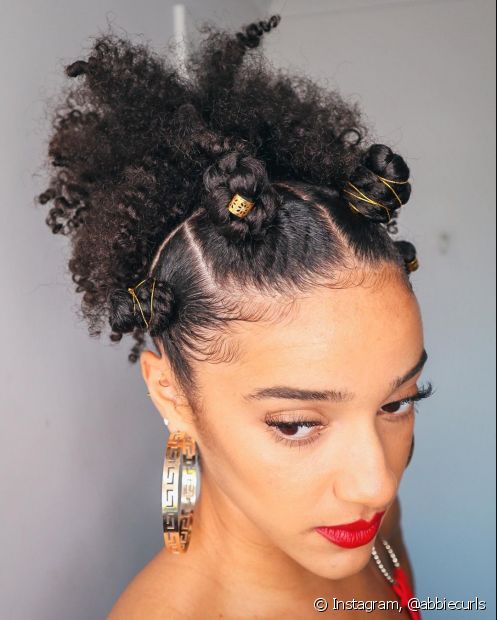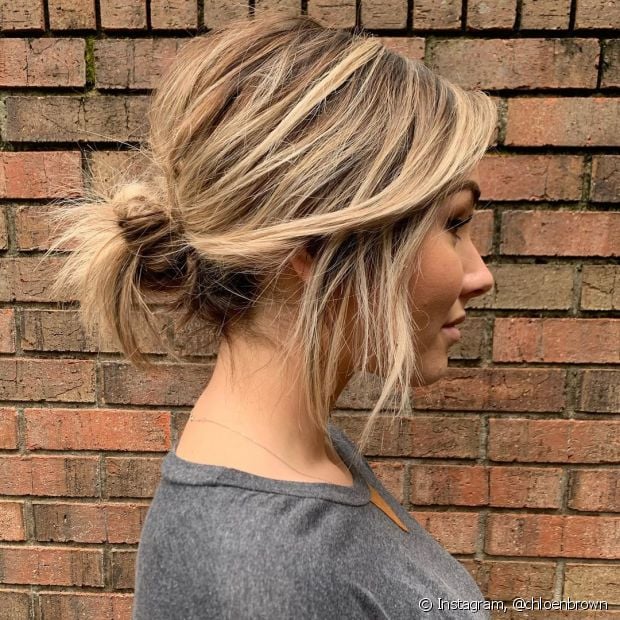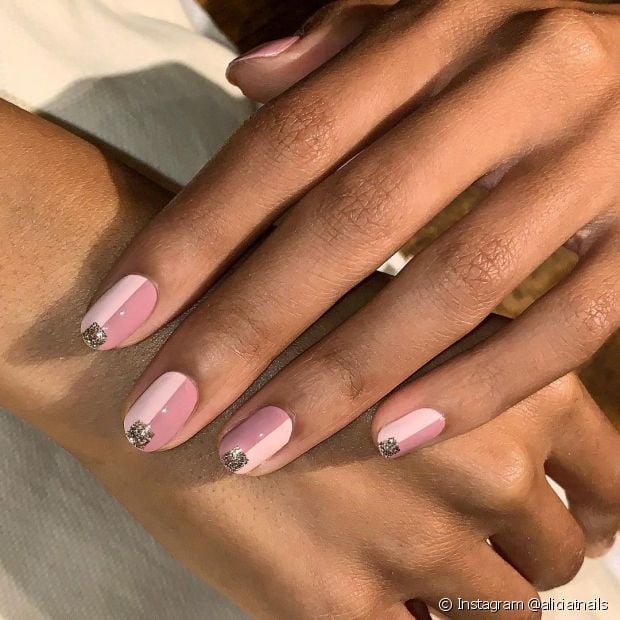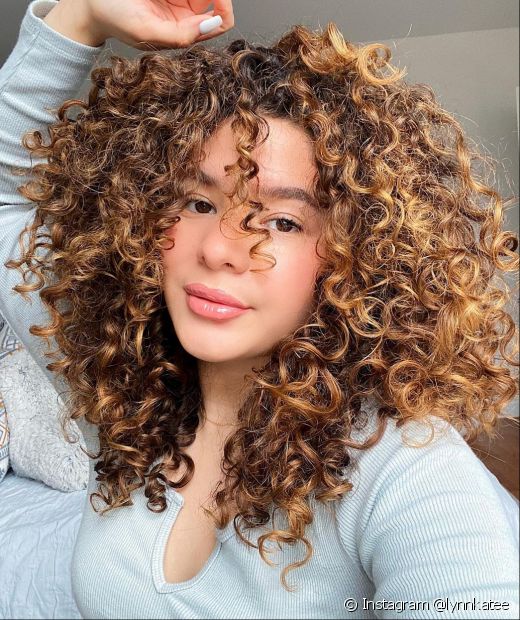08/ Capillary schedule: how to make your treatment routine to keep your hair healthy

The capillary schedule is a perfect care routine for all types of hair (Photo: Instagram @chiziduru)

The order of procedures in the capillary schedule varies according to the needs of your hair (Photo: [email protected])

Colored hair needs to focus on nutrition and rebuilding the capillary schedule (Photo: Instagram @eman)

Bet on the capillary schedule to recover the strands after discoloration (Photo: Instagram @joliejanine)

The capillary schedule helps the hair grow strong and healthy (Photo: Instagram @thecurlybella)





diva tip
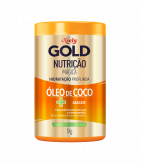
Niely Gold Magic Nutrition Concentrated Mask
Explore
Miraculous Hydration Mask
Explore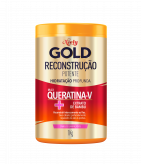
Niely Gold Powerful Reconstruction Concentrated Mask 1kg
ExploreThe capillary schedule became known a few years ago and is already part of the day to day care of many women's locks. Despite the name giving the impression of something very professional, the biggest advantage of this routine is that it can be done at home, with products that don't have to be expensive and even with ingredients that you already have and that can help you put together. your homemade hair schedule.
Still, many people still have doubts about the functioning of the capillary schedule and its benefits. That's why today we're going to talk about the main characteristics of each stage and show you how to put together a hair schedule according to your hair type. Check it out!
What is a capillary schedule and what is it for?
The capillary schedule is an interspersed routine of three basic care: hydration, nutrition and capillary reconstruction. Together, these three treatment steps return water, lipids, nutrients, proteins and vitamins to the hair, offering everything it needs to stay healthy and looking good.
The capillary schedule can be done on all hair types with the necessary adaptations and helps not only to recover damaged hair, but to prevent different hair problems. Learn more about the process here!
A post shared by Jayme Jo Massoud (@jaymejo)
Hair hydration is essential on schedule for all hair types
Hair hydration is a fundamental treatment for any type of hair, from the healthiest to the totally damaged. She is responsible for replacing the water and returning the shine and softness of the locks. Of course, such care must be continuous, therefore, according to the schedule, you can repeat hydration up to two times in the same week.
For this, you will need to invest in a concentrated hydration mask and apply it to the strands that are still damp after shampooing. Wait for the action time indicated on the package and apply the conditioner to close the hair cuticles and preserve the treatment effect. To enhance care and transform it into hydronutrition, combine your mask with a nourishing vegetable oil before applying it to your hair.
When choosing a moisturizing mask, choose products that have as main ingredients different types of hair vitamins, extracts and natural components, such as coconut water.
A post shared by Sophia Chang (@sophiachang)
Nutrition replenishes essential oils for hair
Capillary nutrition is the step responsible for feeding the hair and replenishing the lipids in the hair fiber. The composition of nutritious products is rich in vegetable butters and oils, usually combined with moisturizing components. Therefore, it is indicated for dry, resected and damaged hair by chemical processes. In the case of curly hair, which dries out more easily, this is the most important phase.
To do nutrition at home, you can use the concentrated mask, as in hydration, or bet on moistening with pure vegetable oil. In that case, you'll just need to apply the chosen oil to all your hair before washing and massage your scalp with it. Let it act for at least two hours. After that, wash your hair normally and get ready to have super healthy and shiny hair.
Read also: Nocturnal hair wetting: step by step on how to do the treatment that nourishes your hair while you sleep
How many times a week can I do hair nutrition?
The weekly and monthly amount of nutrition also varies according to the needs of the hair. Generally, nutrition is done five times a month with one week having two sessions, but those with curly and frizzy hair can increase it one to two times if they feel that the hair needs a greater replacement of natural oiliness.
A post shared by Joyjah Estrada (@joyjah)
Hair reconstruction is a deep strengthening treatment
The role of capillary reconstruction is to strengthen the strands by returning proteins to hair that has undergone chemical procedures or suffers from hair loss and breakage. You can carry out the treatment in two ways: with concentrated reconstruction masks or with liquid keratin. Still, healthy highlights can also benefit from treatment.
With the reconstruction mask, you can follow a common hydration step by step. Now with keratin, the path is a little different: after washing your hair with shampoo and with it still damp, spray the hair supplement on the ends and along the entire length of the strands. Let the product act for 10 minutes. To keep your locks even softer, apply a mask from the same line without rinsing the previous product, thus providing quick hydration. After 5 minutes, rinse your hair with cool water.
How many times a week can I do hair reconstruction?
As excess keratin is harmful to the hair, you should be aware of how often you do hair reconstruction. The treatment can be repeated weekly in cases of very damaged hair, which urgently need to be recovered, but the intervals should be increased to two weeks as soon as the situation improves. This is also the recommended frequency for slightly damaged or chemically treated hair. Healthy wires, without chemicals or without the influence of heat tools, need rebuilding only once a month.
A post shared by Tali Tepuke (@talitepuke)
Porosity test helps to identify the real need of the hair to assemble the schedule
Before putting together your capillary schedule, it is very important that you know if your hair is healthy, slightly damaged or very damaged, to get the right amount of each step of the routine! For this, it is worth doing a capillary porosity test, which is a good alternative to discover the real state of the wires. To do the porosity test, you just need to put a clean and dry hair strand in a glass of water and leave it for at least 10 minutes. After this pause time, observe which area of the cup the thread has remained.
If the thread floats: it means that he is healthy, and that capillary hydration should be the main treatment to open the cuticles and make the other treatments well received.
If the string is in the middle of the cup: it is lightly damaged and needs nutrition followed by reconstruction to return oils and proteins to the strands;
If the string is at the bottom of the cup: it means that the hair is very damaged, and that it needs good doses of reconstruction to repair the strand.
In addition to the porosity test, you can also look at the appearance of your hair. If he's out of movement and rough, he may need hydration for resected hair. If your hair is very frizzy, lackluster and has trouble detangling, nutrition can be the right hair treatment. Now, if it is brittle, without elasticity and density, reconstruction is the hair treatment most needed by porous hair.
View this post on Instagram
A post shared by amy vardijan (@amyvardijan) on May 6, 2019 at 1:26pm PDT
What products to use to make the hair schedule?
It's important to choose the right hydration, nutrition and reconstruction cream, diva! Each stage of the schedule returns different needs to the threads and, therefore, it is worth finding the essential ingredients of each capillary treatment. For this, the tip is to look at the assets present in the masks for each stage of the schedule! Check out some essential assets for capillary hydration, nutrition and reconstruction:
Hydration Mask: coconut water and aloe vera are good actives to find in a hydration cream, as coconut water hydrates and promotes softness of the threads and aloe vera replenishes vitamins and minerals with its regenerating action. A great combination!
Nutrition Mask: Coconut and avocado oil actives provide deeply hydrated and nourished hair, soft and shiny, in addition to having an anti-dryness action.
Reconstruction Mask: Max Keratin-V and bamboo extract are great hair rebuilders. While the Max Keratin-V technology recovers the fiber thanks to its compound of vegetable proteins and amino acids, the bamboo extract strengthens and hydrates the hair fiber.
A post shared by + (@jesseniaspallet)
How to set up your hair schedule
To put the capillary schedule into practice, you need to be very attentive to the needs of your strands, as they will define the order of procedures. Below, we share the step-by-step process for each hair condition for four weeks, that is, a whole month of intensive treatment. Check out the categories below and see which schedule is best for you!
For very damaged hair (extremely dry and brittle)
1st week: hydration - nutrition - reconstruction
2nd week: nutrition - hydration - reconstruction
3st week: hydration - nutrition - reconstruction
4th week: hydration - hydration - reconstruction
For slightly damaged hair (with split ends and lack of shine)
1st week: hydration - nutrition - hydration
2th week: hydration - hydration - reconstruction
3rd week: nutrition - hydration - nutrition
4st week: hydration - nutrition - reconstruction
For healthy hair (without coloring or any other type of chemical)
1st week: hydration - hydration - nutrition
2st week: hydration - nutrition - hydration
3rd week: nutrition - hydration - nutrition
4st week: hydration - nutrition - reconstruction
How to set up my capillary schedule for growth?
It is possible to make your hair grow fast and healthy with the capillary schedule, diva! For this, you must also follow the steps of hydration, nutrition and reconstruction, but with a small change in the choice of assets. In the hydration step, you can choose a treatment cream that has caffeine in its composition, as the ingredient stimulates blood circulation in the scalp, which stimulates hair growth.
Ginger is also a powerful ally for strengthening and preventing hair aging. Due to its high supply of proteins and nutrients, castor oil can help in the growth process. To get the best results, bet on a hair supplement that has the assets together!
A post shared by NICOL E. (@nicoleguerriero)
Who can do the hair schedule?
The highlights care routine can and should be done on all types of hair, whatever the curvature or condition of the hair! Hydration, nutrition and reconstruction maintain the health of healthy hair and restore life to damaged hair, in addition to meeting the needs of straight, wavy, curly and frizzy hair.
What is the correct order of the hair schedule?
The order of the capillary schedule depends on the needs of the hair, that is, those with dry hair should start and have more hydration sessions. Those with naturally dry hair should focus on nutrition, and lastly, damaged hair needs rebuilding once a week. But to get the best results, it is important that each treatment is spaced 48 hours apart. Thus, the assets penetrate the hair in the right way and the strands are not overloaded!
How long does it take for the capillary schedule to take effect?
When the hair is healthy or slightly damaged, the results of the capillary schedule can already be seen in the first month of the routine! You can notice some differences, such as hydrated, soft and less frizzy hair. But if the hair is very damaged by chemical procedures, the benefits of the capillary schedule can be seen from the second month of the care routine.
Also, over the course of the schedule, it is very likely that you will need to adapt the routine steps. That's because hair health will improve over time, so the amount of some steps and spacing should change - rebuilding, for example, shouldn't be done frequently on healthy hair. Therefore, it is important that you evaluate your hair over the weeks and months, understanding when you should replace a product or hair treatment.
Published on: 04/
A post shared by Akushika- #NYCBlogger (@akushikagonenatural)






